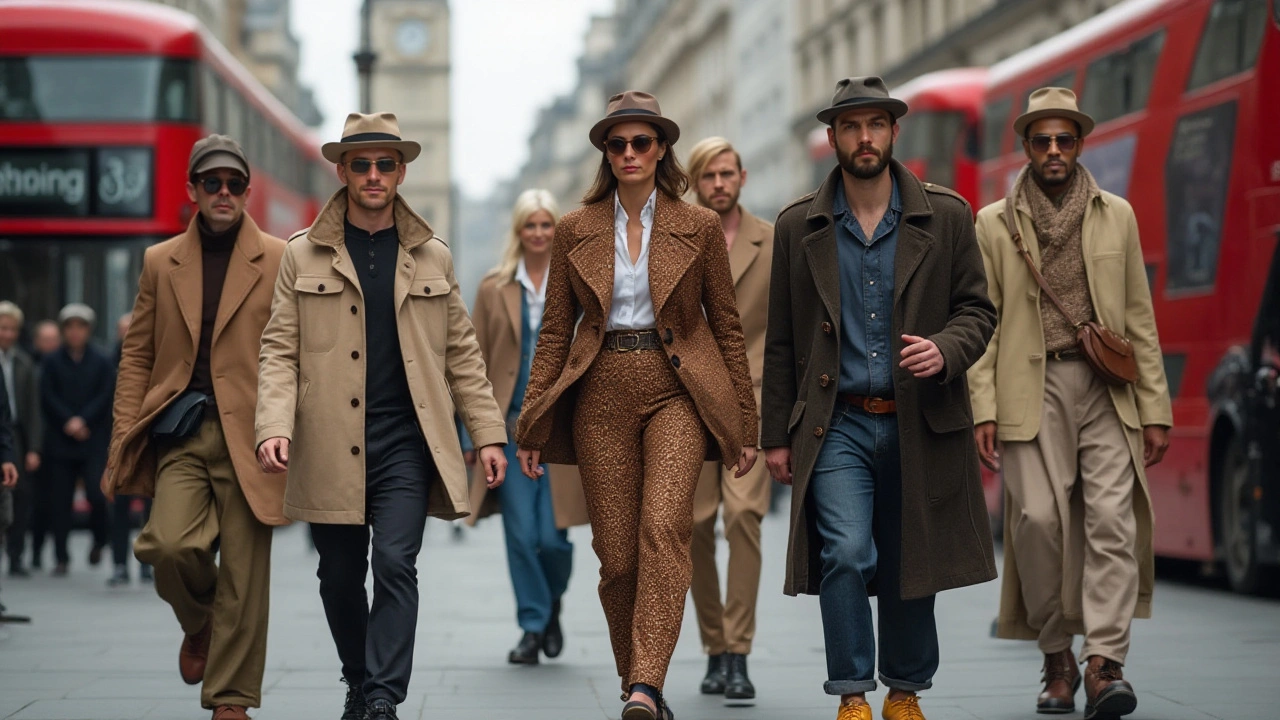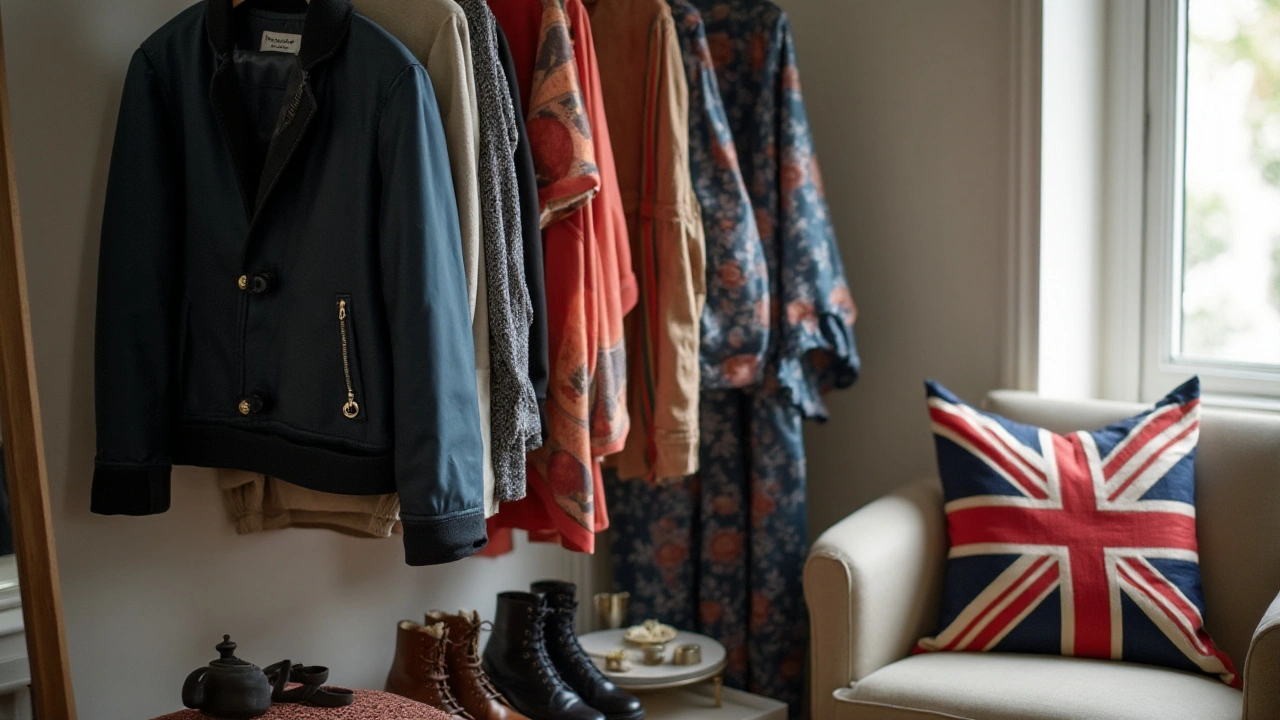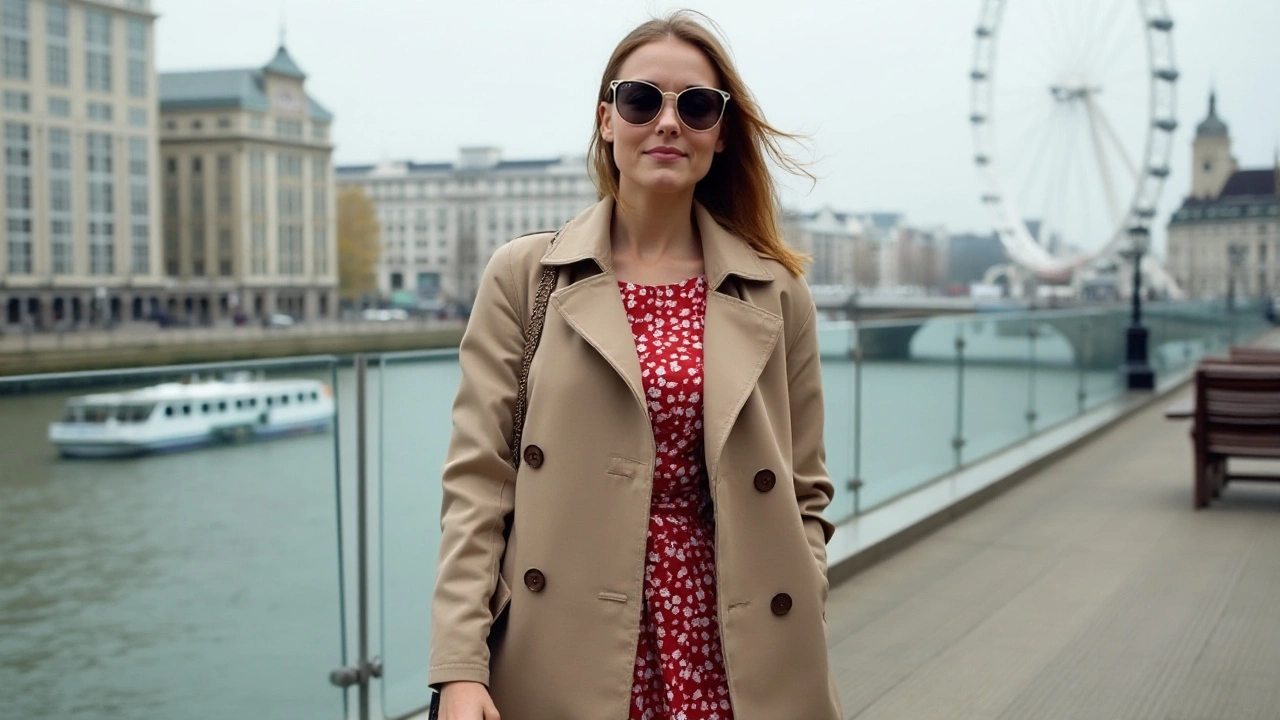Why International Fashion Trends Are the New Black
 Aug, 31 2024
Aug, 31 2024
Fashion is constantly evolving, and one trend that's making waves is the rise of international style. But what exactly is international style? It's about taking inspiration from cultures around the world and blending them into something fresh and exciting.
In today's interconnected world, fashion boundaries are dissolving. Thanks to social media and global travel, it's easier than ever to explore and adopt styles from different countries. From Japanese minimalism to French chic, these influences are shaping a new, more inclusive approach to fashion.
But it's not just about aesthetics. Incorporating international trends can make your wardrobe more versatile and unique. Ever tried mixing a traditional Indian saree with modern Western pieces? Or pairing a Mexican embroidered blouse with your favorite jeans? The possibilities are endless.
As we look to the future, international style seems poised to become a mainstay in our wardrobes. It's not just a fleeting trend, but a reflection of our increasingly globalized world. So why not embrace it and add a touch of international flair to your everyday look?
- The Rise of International Fashion
- Key Influences from Around the World
- How to Incorporate Global Trends into Your Wardrobe
- The Future of Fashion in a Globalized World
The Rise of International Fashion
The concept of international fashion has been growing steadily over the past decade. This evolution is partly driven by the advent of the internet and social media, where trends travel faster than ever before. Take, for example, the global reach of major fashion events like New York Fashion Week or Paris Haute Couture. These events are live-streamed and covered by influencers worldwide, making style inspirations accessible to millions instantly.
One fact worth highlighting is how major brands and designers increasingly draw their creative juices from diverse cultural elements. The late Karl Lagerfeld once said, "Fashion is not just about clothes; it's about the story you tell with them." He was known to mix elements from different cultures, creating a truly global aesthetic. This approach is not exclusive to high-end designers either. Even fast fashion brands like Zara and H&M offer collections featuring styles from different cultures, making international fashion more mainstream and affordable.
The influence of international fashion extends to various subcultures and local communities as well. For instance, the 'K-wave' or Korean Wave has introduced K-pop fashion to the global stage. Bands like BTS and Blackpink have not only shaped music but also set global fashion trends, with fans replicating their unique styles worldwide. This convergence of culture and fashion exemplifies how global influences can shape and redefine local trends.
Statistics also show a clear trend towards embracing international fashion. According to a report by McKinsey & Company, international sales of fashion items skyrocketed by 35% over the last five years. This data proves how consumers are now looking beyond their local markets for fashion inspiration. The same report also states that online retailers offering international styles saw a significant increase in traffic and sales, underscoring the demand for more diverse fashion choices.
Additionally, technology plays a huge role in the rise of international fashion. With advanced AI algorithms, fashion retailers can predict trends from various parts of the world and stock accordingly. This tech-driven approach ensures that shoppers have access to the latest international trends as soon as they hit the runway or the streets.
Tamara Mellon, the co-founder of Jimmy Choo, once mentioned, "Fashion transcends borders and cultures. It's the universal language of expression."
The rise of international fashion is not just a fleeting trend; it's a testament to how interconnected our world has become. From high-profile designers to everyday consumers, embracing global styles is a celebration of diversity and a nod to our shared human experience. So next time you look for new additions to your wardrobe, consider making room for pieces that tell a global story, blending various cultural threads into the fabric of your style.

Key Influences from Around the World
Fashion has always been a melting pot of cultures, blending traditional and modern elements from different regions. The rise of international fashion trends has brought a colorful array of styles and influences to our wardrobes. One of the most captivating aspects is how these global trends speak to our collective identity and individuality.
Take, for instance, Japan’s influence on international style. Japanese fashion, known for its minimalism and precision, has taken the world by storm. Brands like Comme des Garçons and Issey Miyake are celebrated for their innovative cuts and architectural shapes. You can easily spot Japanese minimalism in the clean lines and neutral color palettes that are popping up everywhere from runways to streetwear. This approach is not just aesthetically pleasing but also highly functional, suitable for any modern wardrobe.
France, with its ever-iconic Parisian chic, continues to be a major trendsetter. Effortless elegance, simple tailoring, and a focus on quality over quantity define French style. Think Breton stripes, well-fitted blazers, and tailored trousers. French fashion giants like Chanel and Dior have set standards for decades, emphasizing that less is often more when it comes to true style. This timeless aesthetic has permeated wardrobes across the globe, encouraging a move away from fast fashion towards more sustainable, quality pieces.
Another fascinating influence comes from India, known for its vibrant colors and intricate textiles. The Indian saree, for example, is making its way into Western fashion, often reimagined into contemporary styles like saree gowns. The introduction of elements like detailed embroidery and bold patterns into international fashion breathes new life into traditional Western garments. Indian designers like Sabyasachi and Manish Malhotra are gaining global recognition for their skillful fusions of East and West.
Global style also owes a lot to African fashion, which is often overlooked but incredibly rich and diverse. African prints, with their bold colors and striking patterns, have found a place in both high fashion and everyday wear. Countries like Nigeria and South Africa host fashion weeks that rival those in Western capitals, showcasing designers who blend traditional fabrics with contemporary designs. The use of Ankara fabric, for example, has become a worldwide phenomenon, admired for its versatility and vibrancy. Ankara can be tailored into anything from casual wear to haute couture.
The United States, being a cultural melting pot, also contributes to the global fashion scene in a unique way. American fashion often borrows from various international styles while adding its own touch of casual comfort. The influence of streetwear, with brands like Supreme and Off-White, showcases a perfect blend of urban culture and high fashion. This trend has its roots in American cities but has spread worldwide, illustrating how global influences can be adapted locally and gain new life.
Latin America brings a different kind of zest to international fashion. Known for its festive colors and bold designs, Latin American fashion often incorporates traditional elements such as ponchos, sombreros, and embroidered fabrics. Designers like Carolina Herrera from Venezuela and Oscar de la Renta from the Dominican Republic have made significant marks on the global stage, highlighting the beauty and versatility of traditional Latin American artistry.
In summary, the richness of global style lies in its diversity. By embracing these international influences, we not only celebrate different cultures but also enrich our own sense of style. Whether it’s the minimalism of Japan, the elegance of France, the vibrancy of India, the boldness of Africa, or the casual flair of America, the world offers a mosaic of fashion inspirations just waiting to be explored.

How to Incorporate Global Trends into Your Wardrobe
Incorporating global style into your wardrobe doesn't have to be daunting. With a little creativity and an open mind, you can easily blend pieces from different cultures into your everyday look. Here are some practical tips to help you get started.
First, don't be afraid to experiment. Fashion is all about self-expression, so try mixing and matching different cultural elements. For example, you could pair a traditional Chinese silk blouse with modern denim jeans. This creates a unique blend of classic and contemporary that can set you apart from the crowd.
Next, pay attention to quality. Many global fashion pieces are known for their craftsmanship. Japanese kimonos, for instance, are often hand-made with intricate details that make them a work of art. Investing in such high-quality items can elevate your wardrobe and make it more special.
Another tip is to look for versatile pieces. Some international garments can be worn in multiple ways, offering more bang for your buck. For example, a large Indian scarf can be used as a shawl, a head wrap, or even a beach cover-up. This flexibility makes it easier to incorporate different styles without overwhelming your closet.
Take inspiration from global fashion icons. Following style influencers from other countries can give you fresh ideas on how to incorporate international trends. Instagram and Pinterest are great platforms for this. Look for hashtags like #GlobalFashionTrends or #InternationalStyle to find influencers who mix traditional and modern elements seamlessly.
When shopping, keep an eye out for stores that specialize in international fashion. Many boutiques and online shops offer a curated selection of global clothing, making it easier for you to find unique pieces. Brands like Zara and H&M have also started incorporating more international designs into their collections, providing a more accessible way to embrace this trend.
Consider attending cultural festivals or events. These can be excellent opportunities to discover new styles and purchase unique items. You can also learn about the history and significance behind different garments, adding another layer of meaning to your wardrobe.
Lastly, mix global elements with your existing wardrobe. You don't need to overhaul your entire closet to embrace international fashion. Start small by adding a few key pieces and see how they fit with your current style. For example, a Mexican embroidered blouse can be a statement piece when paired with a simple skirt or jeans.
Adopting international fashion trends is not just about following what's trendy; it's about celebrating diversity and craftsmanship from around the world. By integrating these elements into your wardrobe, you're making a statement that goes beyond aesthetics. So go ahead, explore and experiment. Let your style be a reflection of the rich, diverse world we live in.

The Future of Fashion in a Globalized World
Globalization has transformed many sectors, and fashion is no exception. The future of fashion lies in its ability to transcend borders, offering a fusion of styles from different cultures. As the world grows more interconnected, we are seeing an eclectic mix of influences that cater to a broader spectrum of tastes and preferences. This merging of designs is bridging gaps and creating a more inclusive fashion industry. For instance, the popularity of Korean fashion, known as K-fashion, has surged globally, influencing everything from streetwear to high-end couture.
One of the most exciting aspects of this trend is how it facilitates cultural exchange. Fashion designers are drawing inspiration from diverse sources, resulting in collections that celebrate heritage while embracing modernity. For example, African prints have found their way into mainstream fashion, popping up on runways and in everyday street style. This trend is not just about borrowing; it also encourages respect and appreciation for different cultures. When you wear a piece inspired by another culture, you are not only making a fashion statement but also acknowledging its rich history.
As international fashion trends continue to gain traction, they are likely to shape consumer behavior in significant ways. Consumers are becoming more discerning, seeking unique pieces that tell a story. This shift is encouraging brands to become more innovative and responsible in their design processes. Sustainability and ethical fashion are becoming more than just buzzwords; they are imperatives. A survey by Statista in 2023 showed that 60% of consumers consider sustainability an important factor when making fashion purchases.
The future of fashion also involves technology. Virtual fitting rooms, AI-driven design, and smart textiles are just some of the advances that are making waves. These technologies are not only enhancing the shopping experience but also enabling designers to push the boundaries of creativity. For example, AI can analyze fashion trends and consumer preferences, helping designers create collections that are both trendy and tailored to what people want. This is particularly useful for embracing and adapting international styles, allowing for more accurate and diverse fashion offerings.
Interestingly, social media continues to play a pivotal role in the dissemination and adoption of international fashion trends. Platforms like Instagram and TikTok are powerful tools for showcasing global styles. Influencers from different parts of the world can introduce their followers to their local fashion scenes, making international styles more accessible. This democratization of fashion means that trends are no longer dictated solely by designers and fashion houses but also by everyday people who love and wear these trends.
The rise of international style is also having an impact on smaller, independent designers who might have otherwise remained unnoticed. The globalized fashion landscape offers a platform for these designers to showcase their work to a global audience. This has led to an increase in collaborations and partnerships across borders, enriching the fashion world with a plethora of fresh perspectives and ideas. It's a thrilling time to be part of the fashion industry; the possibilities are endless.
In summary, the future of fashion is undeniably global. As we continue to connect and interact with different cultures, our wardrobes will reflect this diversity. Embracing international fashion trends means celebrating the beauty and uniqueness of cultures worldwide. So whether it’s a traditional Japanese kimono or a vibrant Indian lehenga, don’t hesitate to add a touch of global style to your collection. After all, fashion is all about expressing oneself, and what better way to do that than through a fusion of the world's best styles?